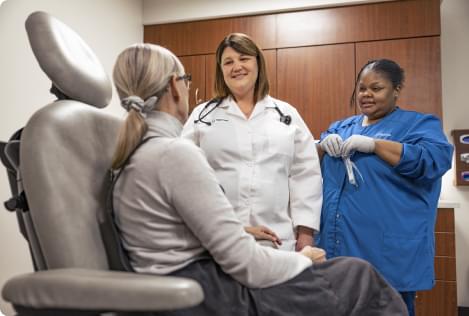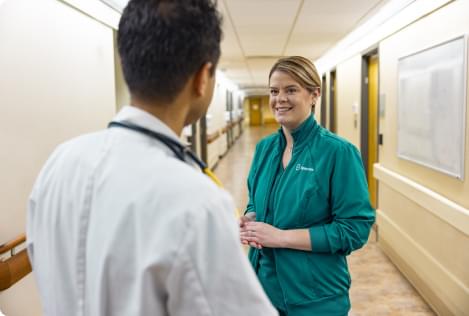Overview
Angiosarcoma is a rare type of cancer that forms in the lining of the blood vessels and lymph vessels. The lymph vessels are part of the immune system. The lymph vessels collect bacteria, viruses and waste products from the body and dispose of them.
This type of cancer can occur any place in the body. But it most often occurs in the skin on the head and neck. Rarely, it may form in the skin on other parts of the body, such as the breast. Or it may form in deeper tissue, such as the liver and the heart. Angiosarcoma can occur in areas that were treated with radiation therapy in the past.
Treatment depends on where the cancer is located. Treatments may include surgery, radiation therapy and chemotherapy.

Symptoms
Angiosarcoma signs and symptoms may vary based on where the cancer occurs.
Angiosarcoma that affects the skin
Most often, angiosarcoma occurs in the skin on the head and neck. It often happens on the scalp. Symptoms of this form of angiosarcoma include:
- A raised area of skin that looks like a bruise
- A bruise-like lesion that grows larger over time
- A lesion that may bleed when scratched or bumped
- Swelling in the skin around the lesion
Angiosarcoma that affects organs
When angiosarcoma affects organs, such as the liver or the heart, it often causes pain. Other symptoms depend on the location of the angiosarcoma.
When to see a doctor
Make an appointment with your health care provider if you have any persistent symptoms that worry you.
Causes
It's not clear what causes most angiosarcomas. Researchers have identified factors that may increase the risk of the disease.
Angiosarcoma happens when cells in the lining of a blood vessel or lymph vessel develop changes in their DNA. A cell's DNA contains the instructions that tell the cell what to do. The changes, which doctors call mutations, tell the cells to multiply quickly. The changes cause the cells to keep living when healthy cells would die.
The result is a buildup of cancer cells that can grow beyond the blood vessel or lymph vessel. The cancer cells can invade and destroy healthy body tissue. In time, cancer cells may break away and spread to other areas of the body.
Risk factors
Factors that may increase the risk of angiosarcoma include:
- Radiation therapy. Treatment with radiation for cancer or other conditions may increase the risk of angiosarcoma. Angiosarcoma is a rare side effect of radiation therapy.
- Swelling caused by lymph vessel damage. Swelling caused by a backup of lymph fluid is called lymphedema. It happens when the lymphatic system gets blocked or damaged. Lymphedema can happen when lymph nodes are removed during surgery. This is often done during surgery to treat cancer. Lymphedema can also happen when there is an infection or other conditions.
- Chemicals. Liver angiosarcoma is linked to exposure to several chemicals. Examples of these chemicals include vinyl chloride and arsenic.
- Genetic syndromes. Certain gene changes that people can be born with can raise the risk of having angiosarcoma. Examples include the gene changes that cause neurofibromatosis, Maffucci syndrome, or Klippel-Trenaunay syndrome, and the BRCA1 and BRCA2 genes.
Diagnosis
Tests and procedures used in angiosarcoma diagnosis include:
- Physical exam. Your health care provider will thoroughly examine you to understand your condition.
- Removing a sample of tissue for testing. Your provider may remove a sample of suspicious tissue for laboratory testing. This procedure is called a biopsy. Tests in the lab can detect cancer cells. Special tests can give your provider more details about the cancer cells.
- Imaging tests. Imaging tests can give your provider an idea of the extent of the cancer. Tests may include MRI, CT and positron emission tomography (PET). Which tests you undergo will depend on your situation.
Treatment
Which angiosarcoma treatment is best for you depends on your situation. Your health care team considers the cancer's location, its size and whether it has spread to other areas of the body.
Treatment options may include:
- Surgery. The goal of surgery is to remove all of the angiosarcoma. Your surgeon will remove the cancer and some of the healthy tissue that surrounds it. Sometimes surgery isn't an option. This might happen if the cancer is very large or has spread to other areas of the body.
- Radiation therapy. Radiation therapy uses high-energy beams, such as X-rays and protons, to kill cancer cells. Radiation therapy is sometimes used after surgery to kill any cancer cells that remain. Radiation therapy may also be an option if you can't have surgery.
- Chemotherapy. Chemotherapy is a treatment that uses drugs or chemicals to kill cancer cells. Chemotherapy may be an option if the angiosarcoma has spread to other areas of the body. Sometimes chemotherapy may be combined with radiation therapy if you can't undergo surgery.
- Targeted drug therapy. Targeted drug treatments attack specific chemicals present within the cancer cells. By blocking these chemicals, targeted drug treatments can cause cancer cells to die. For angiosarcoma treatment, targeted drugs might be an option if the cancer is advanced.
- Immunotherapy. Immunotherapy uses the immune system to fight cancer. Your body's immune system might not attack your cancer because the cancer cells make proteins that help them hide from the immune system's cells. Immunotherapy works by interfering with that process. For angiosarcoma, immunotherapy might be a treatment option for advanced cancer.
Preparing for your appointment
If you have symptoms that worry you, start by seeing your health care provider. If your provider suspects that you may have angiosarcoma, you may be referred to a specialist. This might be a doctor who treats skin diseases (dermatologist) or one that treats cancer (oncologist).
Because appointments can be brief, and there's often a lot of information to discuss, it's good to be prepared. Here's some information to help you get ready, and what to expect from your provider.
What you can do
- Be aware of any pre-appointment restrictions. At the time you make the appointment, be sure to ask if there's anything you need to do in advance, such as restrict your diet.
- Write down any symptoms you're experiencing, including any that may seem unrelated to the reason for which you scheduled the appointment.
- Write down key personal information, including any major stresses or recent life changes.
- Make a list of all medications, vitamins or supplements that you're taking.
- Take a family member or friend along. Sometimes it can be difficult to recall all the information provided during an appointment. Someone who accompanies you may remember something that you missed or forgot.
- Write down questions to ask your provider.
Your time with your provider is limited, so preparing a list of questions can help you make the most of your time together. List your questions from most important to least important in case time runs out. For angiosarcoma, some basic questions to ask your provider include:
- How advanced is my angiosarcoma?
- Has my angiosarcoma spread to other parts of my body?
- What treatments do you recommend?
- What are the benefits and risks of each treatment option?
- I have other health problems. How can I best manage them together?
- Will I be able to work and do my usual activities during angiosarcoma treatment?
- Should I seek a second opinion?
- Should I see a doctor who treats cancer?
- How quickly do I need to make a decision about treatment? Can I take some time to consider my options?
- Are there any brochures or other printed material that I can take with me? What websites do you recommend?
If any additional questions occur to you during your visit, don't hesitate to ask.
What to expect from your doctor
Your provider is likely to ask you a number of questions. Being ready to answer them may reserve time to go over points you want to talk about in-depth. Your provider may ask:
- When did you first begin experiencing symptoms?
- Are your symptoms occasional or continuous?
- How severe are your symptoms?
- Does anything seem to improve your symptoms?
- Does anything seem to make your symptoms worse?
- Have you been diagnosed with any other medical conditions?
- What medications are you currently taking, including vitamins and supplements?
© 1998-2024 Mayo Foundation for Medical Education and Research (MFMER). All rights reserved. Terms of Use


